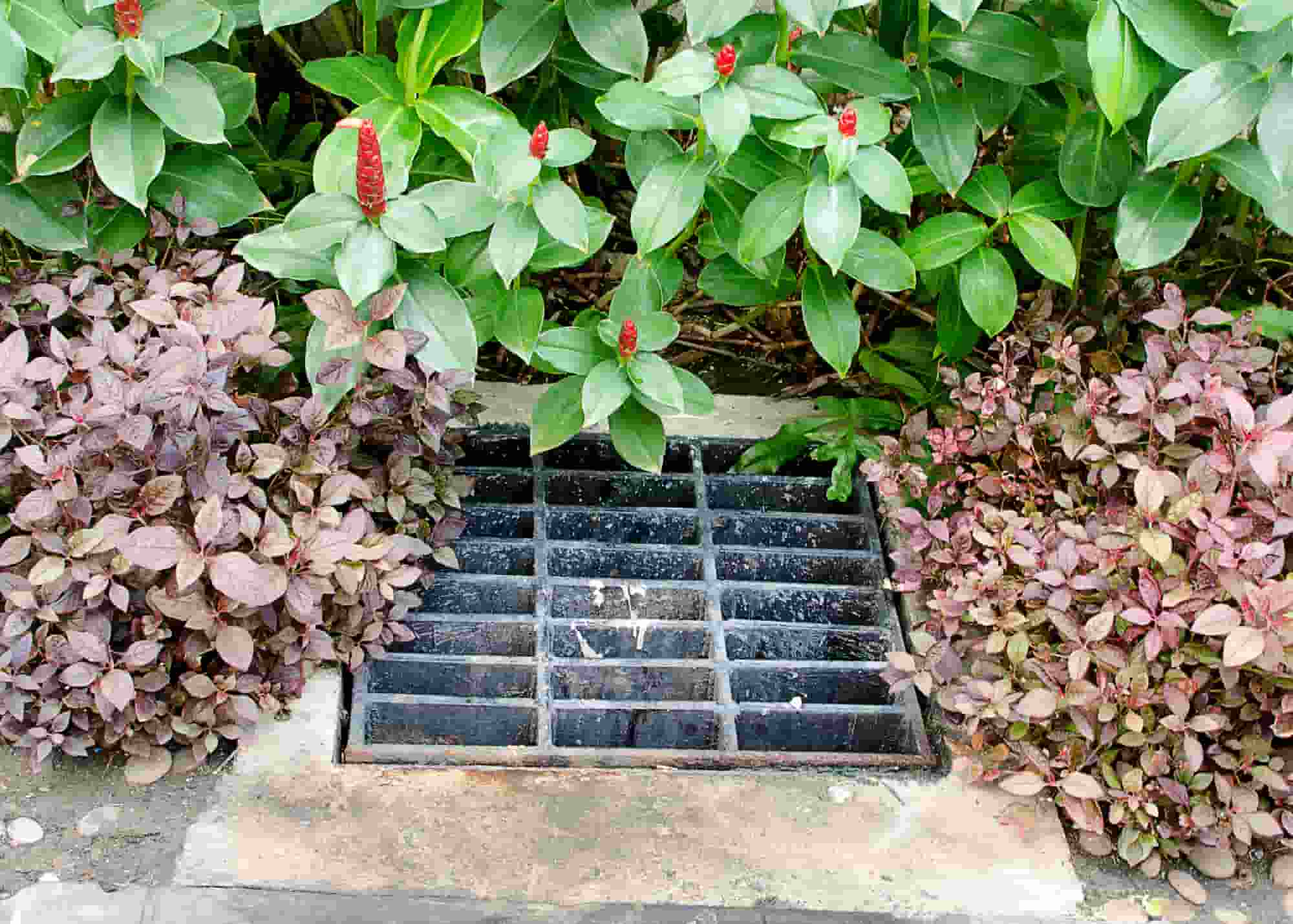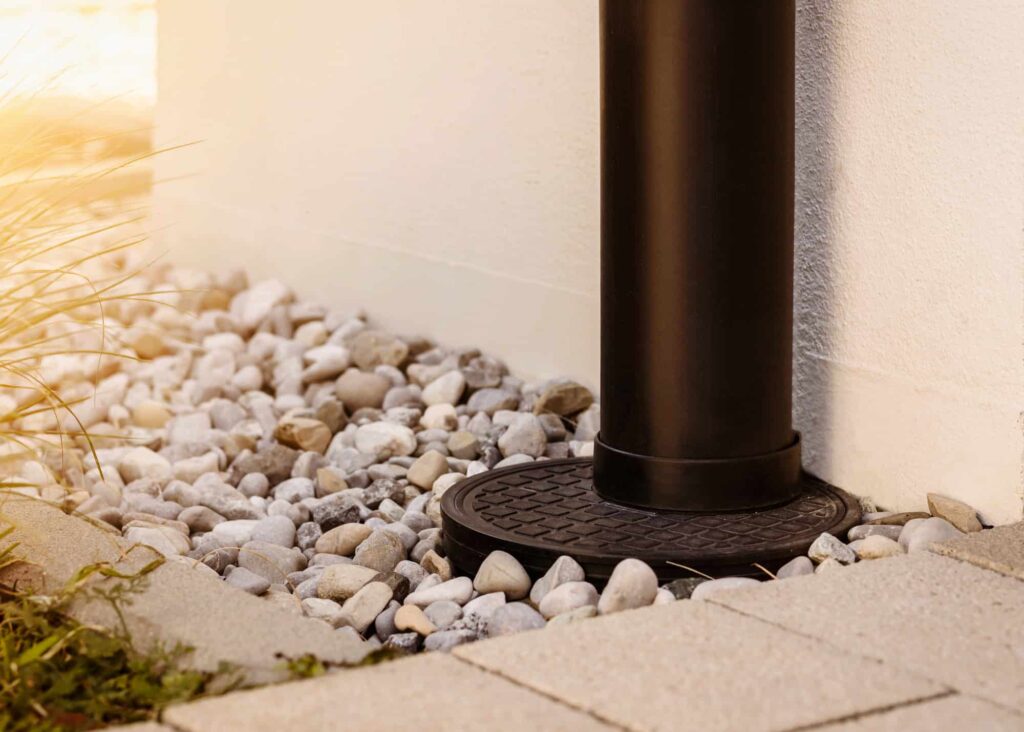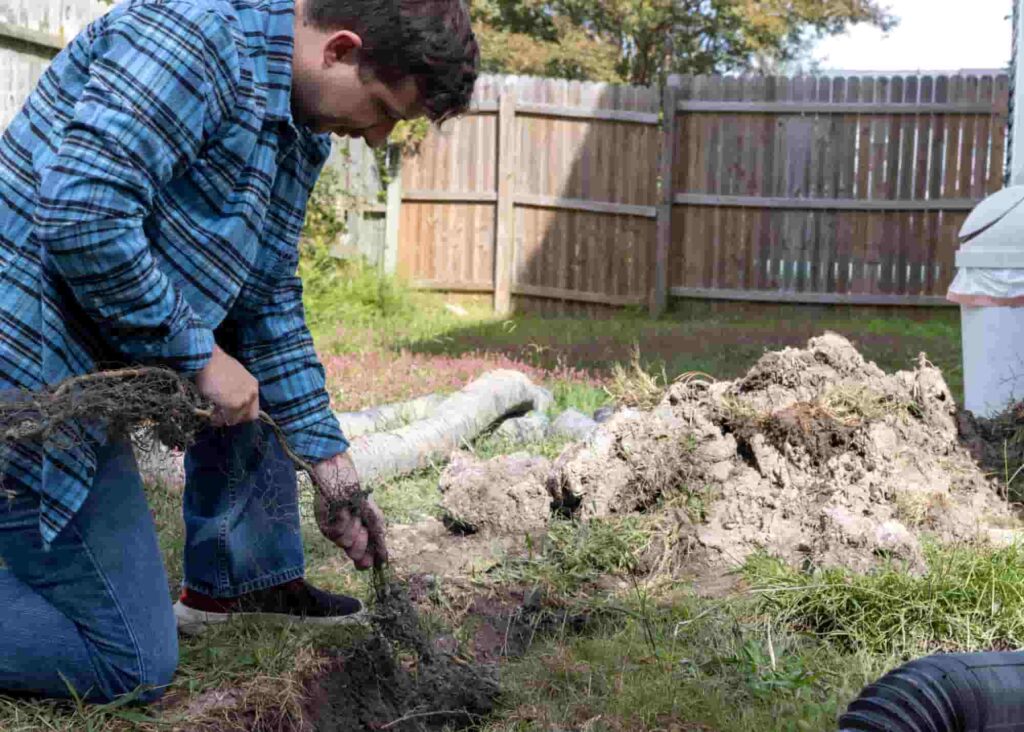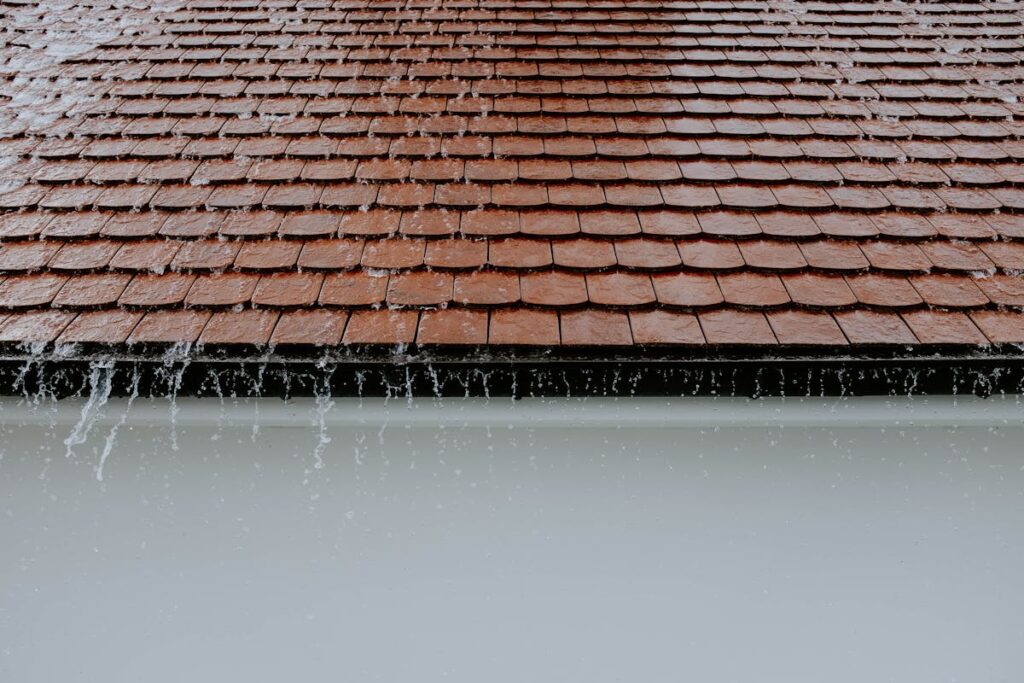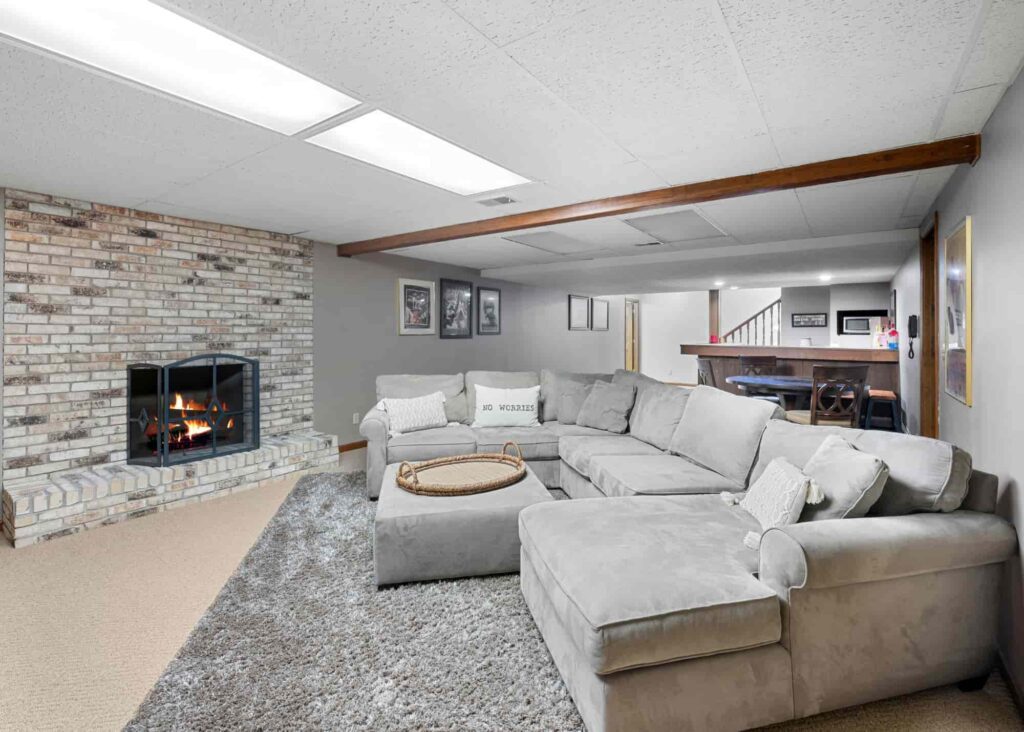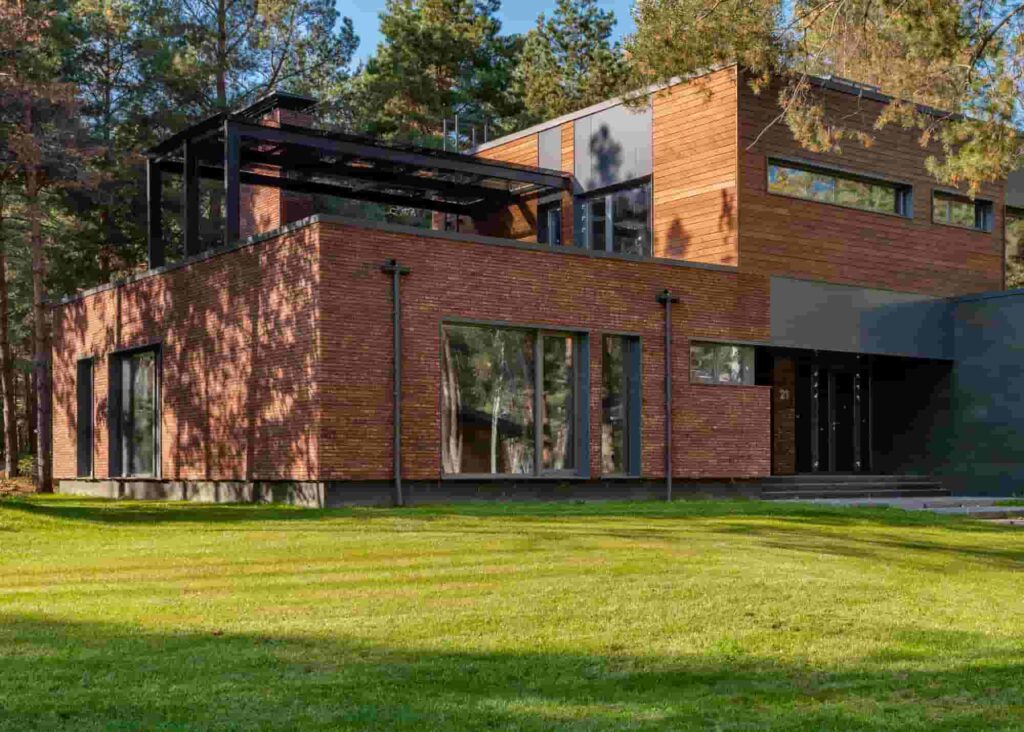Commercial property and homeowners understand the issues excess water and debris buildup can cause. A once pristine backyard can quickly turn into an insect-filled swamp. Excess water can lead to soil erosion, basement flooding, black mold, and a multitude of other issues.
A great yard drainage system can help to alleviate the stress of summer storms and winter snow, protect your property from costly damage, and keep your outdoor sanctuary thriving and looking great.
Although there are a wide variety of drainage systems you can install in your yard, the French drain system is one of the most popular with homeowners across the U.S. The purpose of the French drain is to keep your yard in pristine condition, even when wet weather hits.
All you need to know about French drains
French drains aren’t a sophisticated import from France. They were invented in the 19th century by a New England farmer named Henry Flagg French. French realized that too much water could destroy farmland, erode soil, and lead to property damage. He set out to design a farm yard drainage system that would solve these issues, and the French drain was born.
What is a French drain?
A French drain is a yard drainage system that removes excess water and diverts it away from buildings and low-lying areas on the property. The French drain system consists of trenches located in strategic areas of a property and filled with gravel, mulch, or other varieties of absorbent drainage material.
Perforated pipes run underneath the trenches to disperse and redirect excess water leftover from moisture-filled weather such as snow or rain. The main purpose of a French drain is to protect a property from water damage.
How does a French drain work?
The French drain system works by collecting groundwater that could otherwise soak and oversaturate the yard and seep into the property’s foundation. The system then channels this groundwater into a specific space, such as a low level area of the yard, a drainage ditch, a dry well, or a rain garden. A French drain system is also often installed to disperse water into the street, so the water can travel down a nearby sewer.
Benefits of a French drain
The benefits of a French drain make it a wildly popular drainage system choice for many commercial and residential property owners. As the French drain system runs underground, it doesn’t take away from a yard’s aesthetic appeal, and can blend seamlessly into your landscaping design.
So what does a French drain do that causes it to prove so beneficial? Let’s take a look:
- Controls soil erosion
- Drains excess water
- Prevents flooding
- Prevents water damage
- Promotes easy lawn maintenance
- Protects the property’s foundation
- Removes debris
Why you need a yard drainage system
Whether you choose to have landscaping professionals install a French drain system, or you opt for a DIY yard drain, such as using rain barrels or creating a dry creek bed or rain garden, a yard drainage system is vital to the health of your property and can save you from the costly results of water damage.
If your yard doesn’t have a drainage system, you may experience the following issues:
- Black mold
- Dead grass and plants
- Flooding
- Mildew
- Pest infestation (mosquitoes and other disease-carrying insects or rodents)
- Ruined landscaping
- Soil erosion
- Standing or swamp-like water
Different types of French drains
There are two different types of French drains that you can install. Both serve a specific purpose and work in different ways. The type of French drain you choose to install should be determined by the areas of your property that need the most help with water removal. Here’s a deeper look at both types.
What is an interior French drain?
An interior French drain is installed along the interior perimeter of a property’s foundation and works to protect the interior of the property. The pipes are laid in underground trenches, and don’t create eyesores.
This type of French drain is a great option to install in basements or crawl spaces, and helps to keep a home or commercial building free of excess moisture.
The interior French drain eradicates issues such as basement flooding, mold, and mildew. This drain works by collecting excess moisture before it seeps into a basement floor and keeps the home’s foundation dry.
What is an exterior French drain?
An exterior French drain is installed in a yard — typically along the exterior perimeter of a property. The exterior French drain focuses on protecting the yard from stormwater runoff and groundwater infiltration. This drain system protects the external property from issues like flooding, standing water, and soil erosion.
The exterior French drain is commonly installed by homeowners to keep their yards pristine, enjoy their outdoor property with loved ones, and to keep their property value from depreciating.
Why you should install a French drain
Although there are many types of yard drainage systems to choose from, the French drain offers an easy, cost-effective way to protect your property. Both types of French drains can keep water damage challenges from impacting your home and your property value and resolve excess water runoff issues.
As the French drain system runs through deep trenches that can be covered with aesthetically-pleasing drainage material, this yard drainage system is unobtrusive and won’t hinder your enjoyment of your property.
French drain FAQs
Does a French drain require a lot of maintenance?
Although debris, dirt, grass, and leaves can accumulate in a French drain over time, and require cleaning and maintenance to ensure the French drain system still works properly, the French drain doesn’t require a lot of maintenance or repair.
Most maintenance can be accomplished with an electric sewer snake and doesn’t require professional services. A yearly check can help keep problematic holes from forming in the pipes of the drainage system.
How long does a French drain last?
One of the best features of a French drain system is its durability. French drains can last for decades (up to 30-40 years) without replacement, and alleviate the stress of property-threatening water damage for a lifetime.
Can I install a French drain myself?
Now that you know what a French drain is and how it works, technically, installation can be a DIY project. However, accurate installation, along with access to the expensive landscaping equipment required, is best left in the hands of expert professionals.
Are there other types of yard drains?
Yes, there are other options for yard drains including: a rain garden, dry well and corrugated pipes.
Based in Naperville, Illinois, Ware Landscaping is family-owned and operated. For over 20 years, we’ve been helping our Chicago-area neighbors install French drains, resolve excess water and water damage issues, and take pride in their properties. We can help you create and maintain the yard of your dreams.
Connect with us for all of your landscaping needs, and check out our website for the many services we offer.

